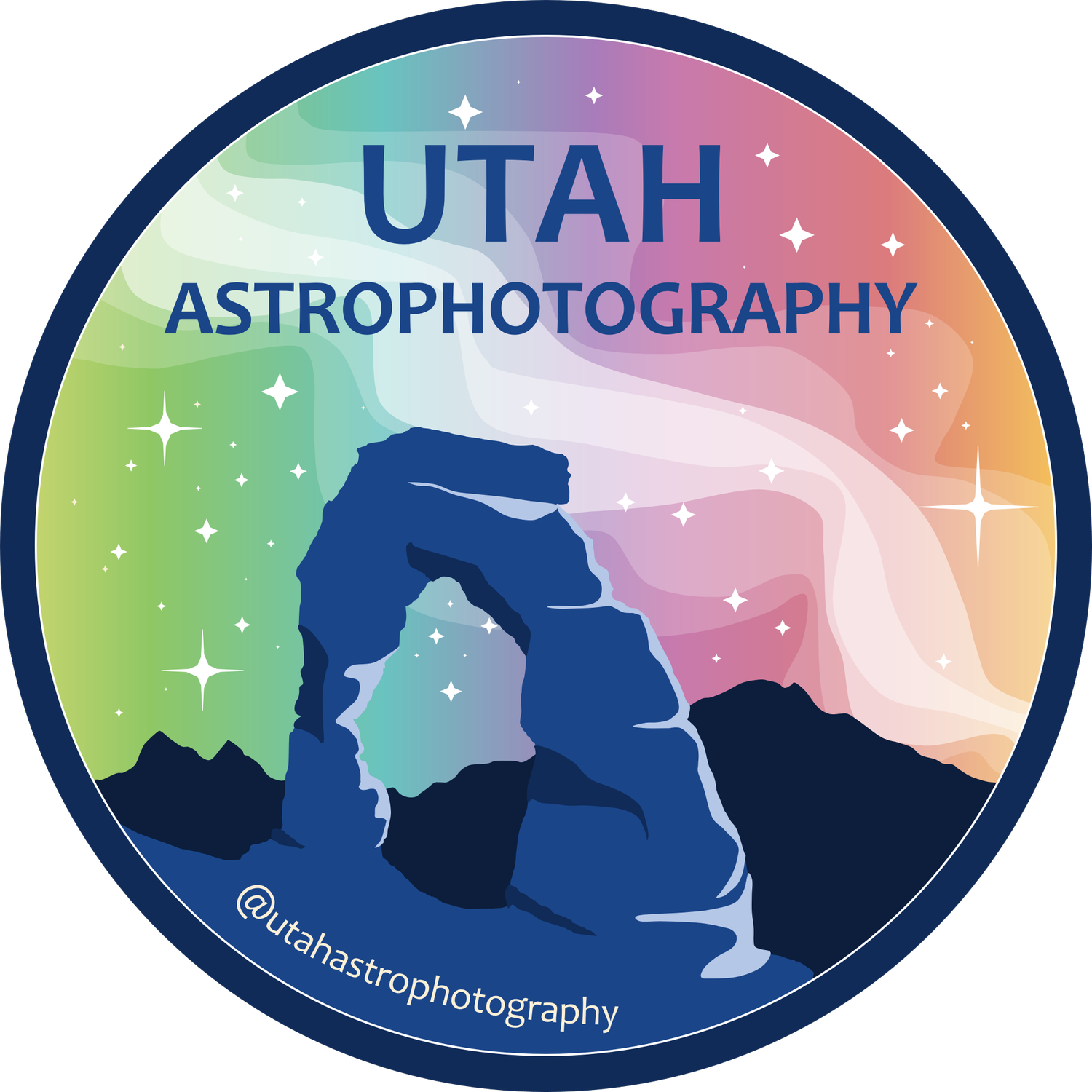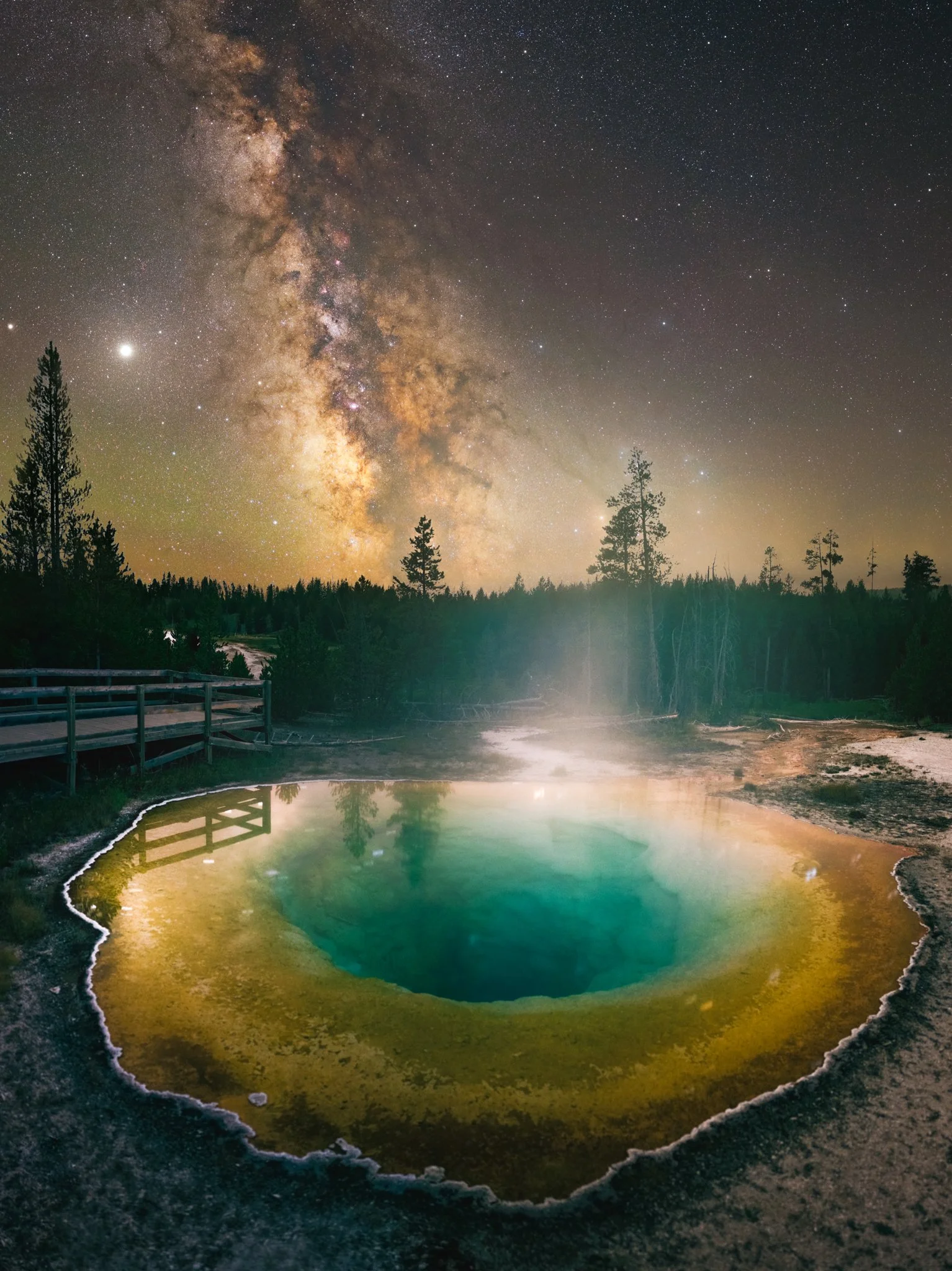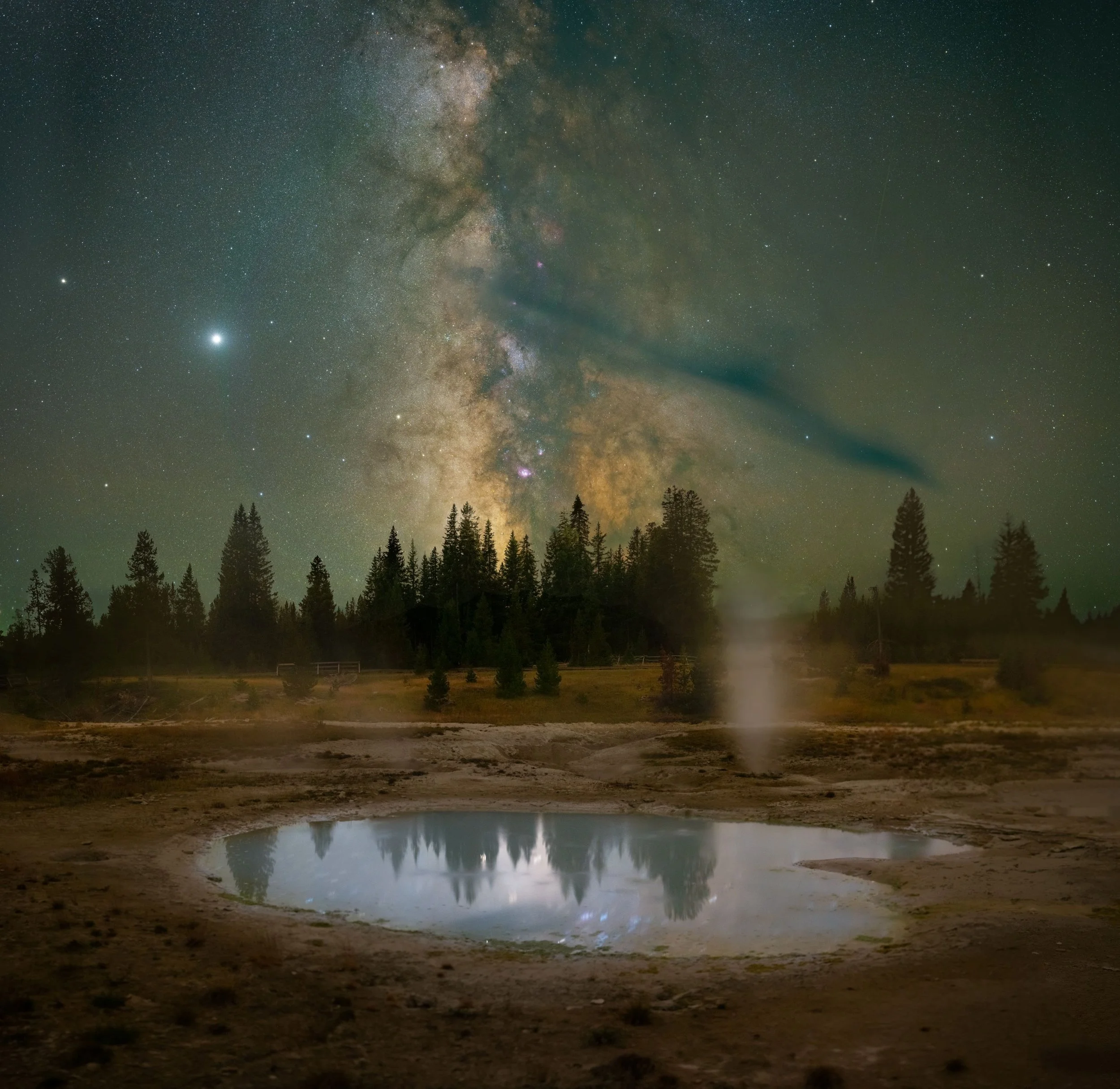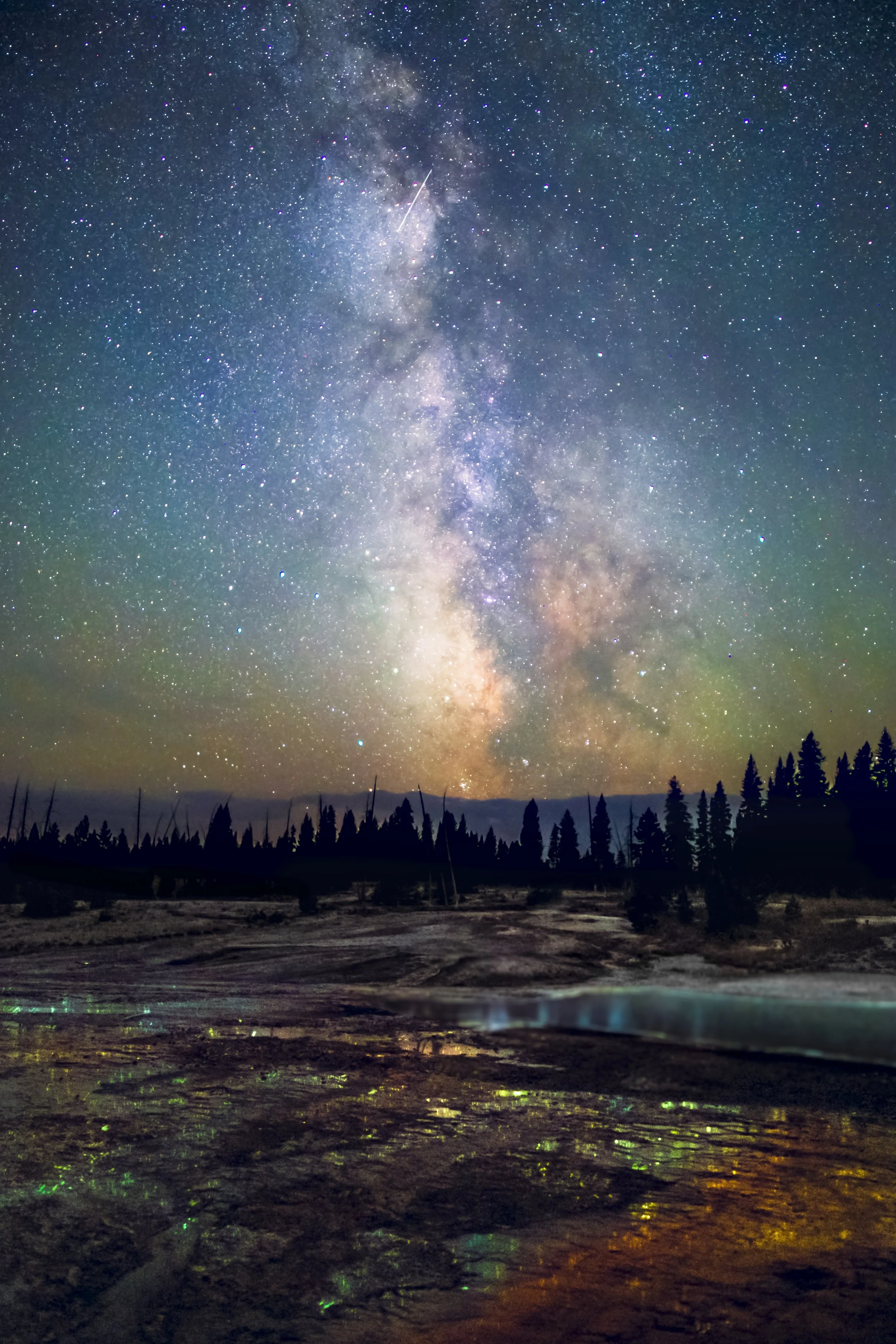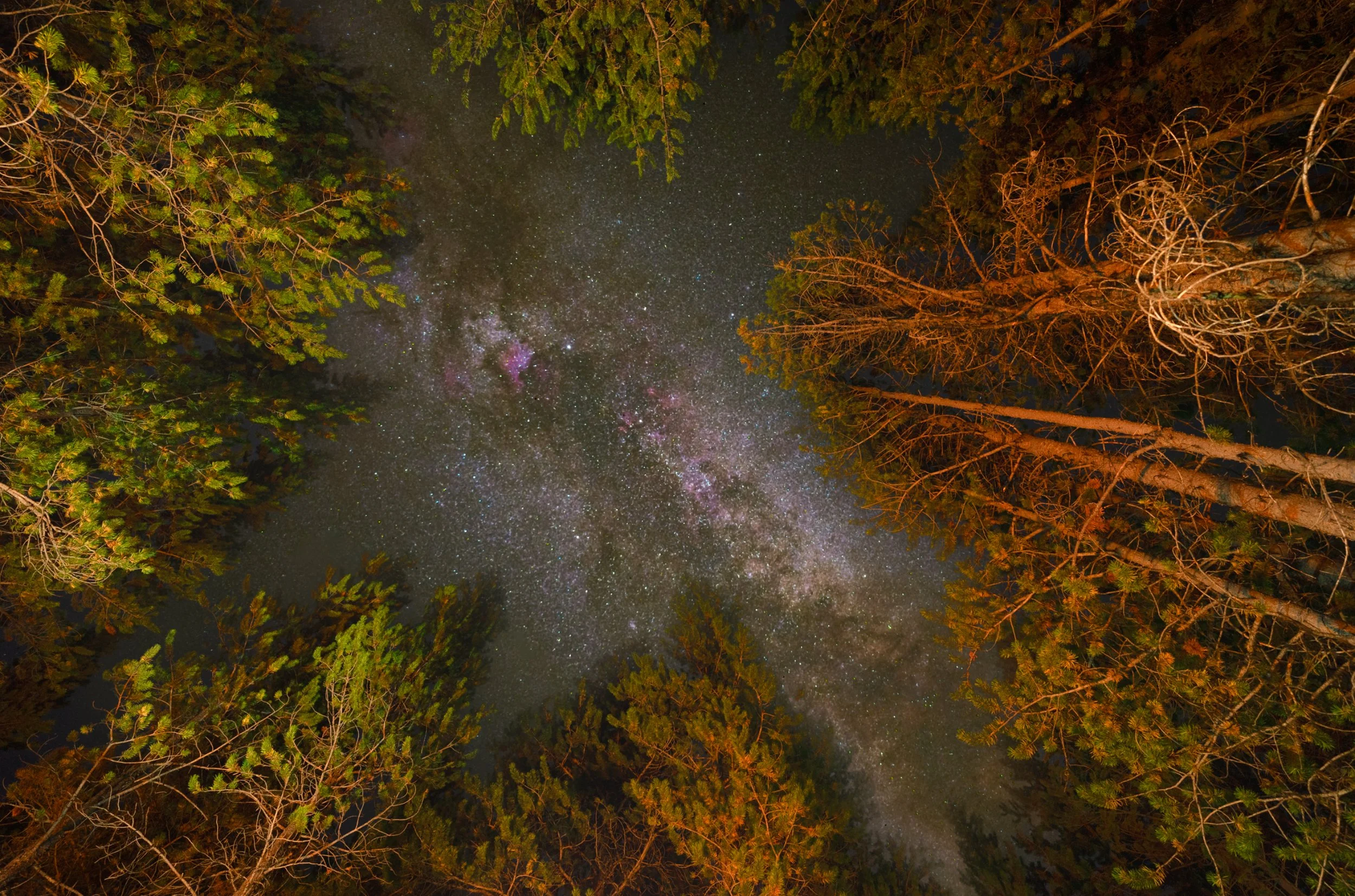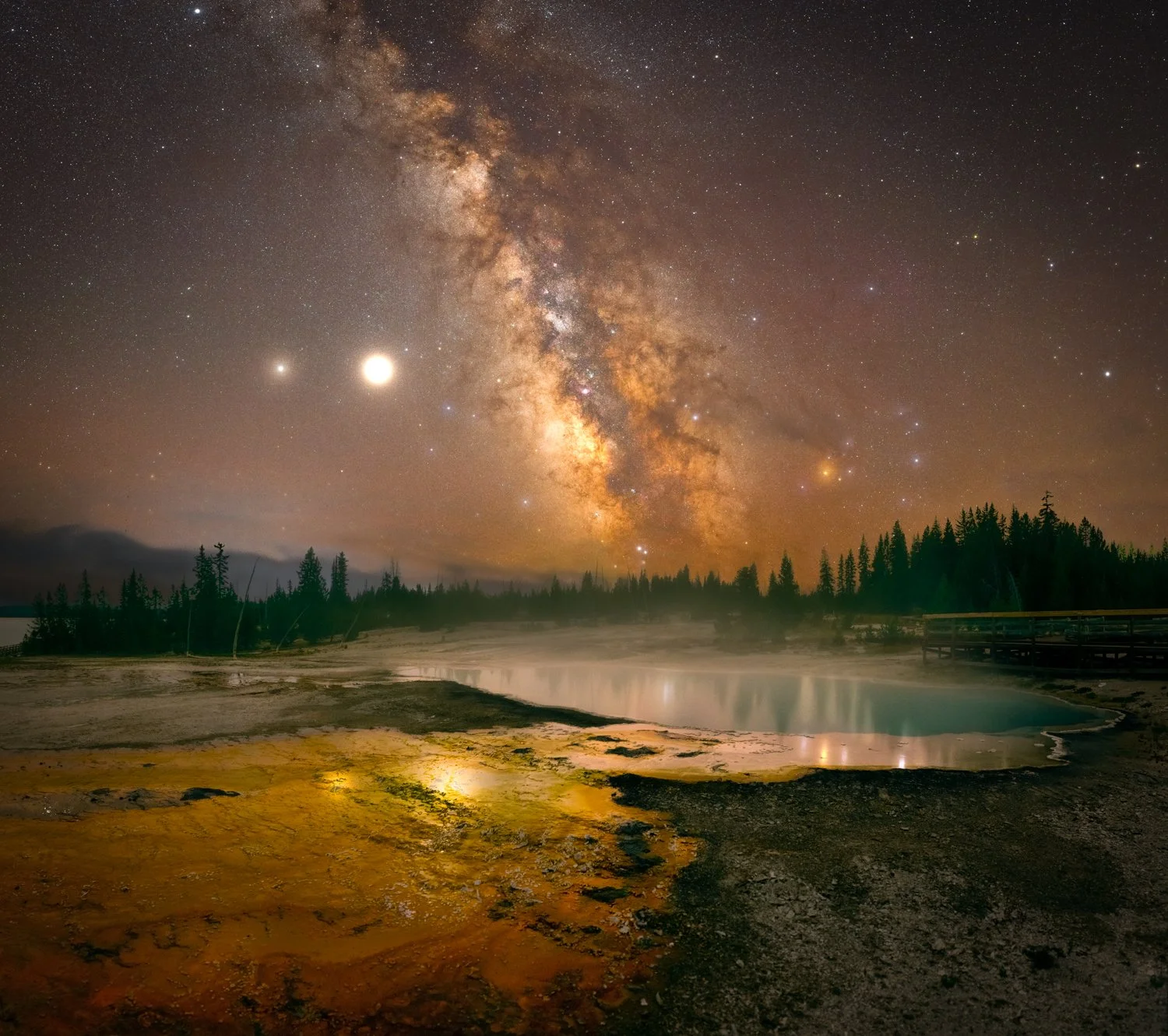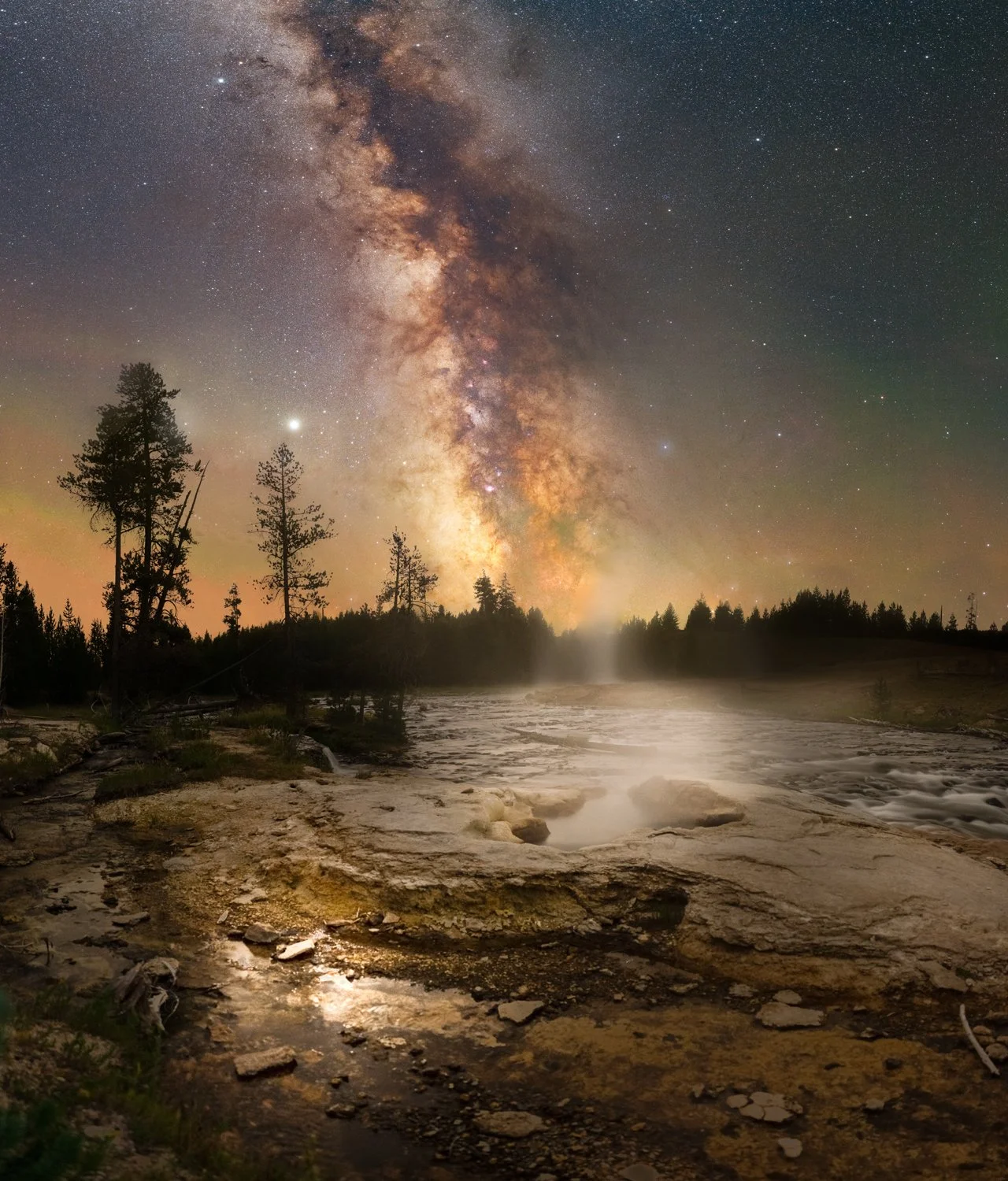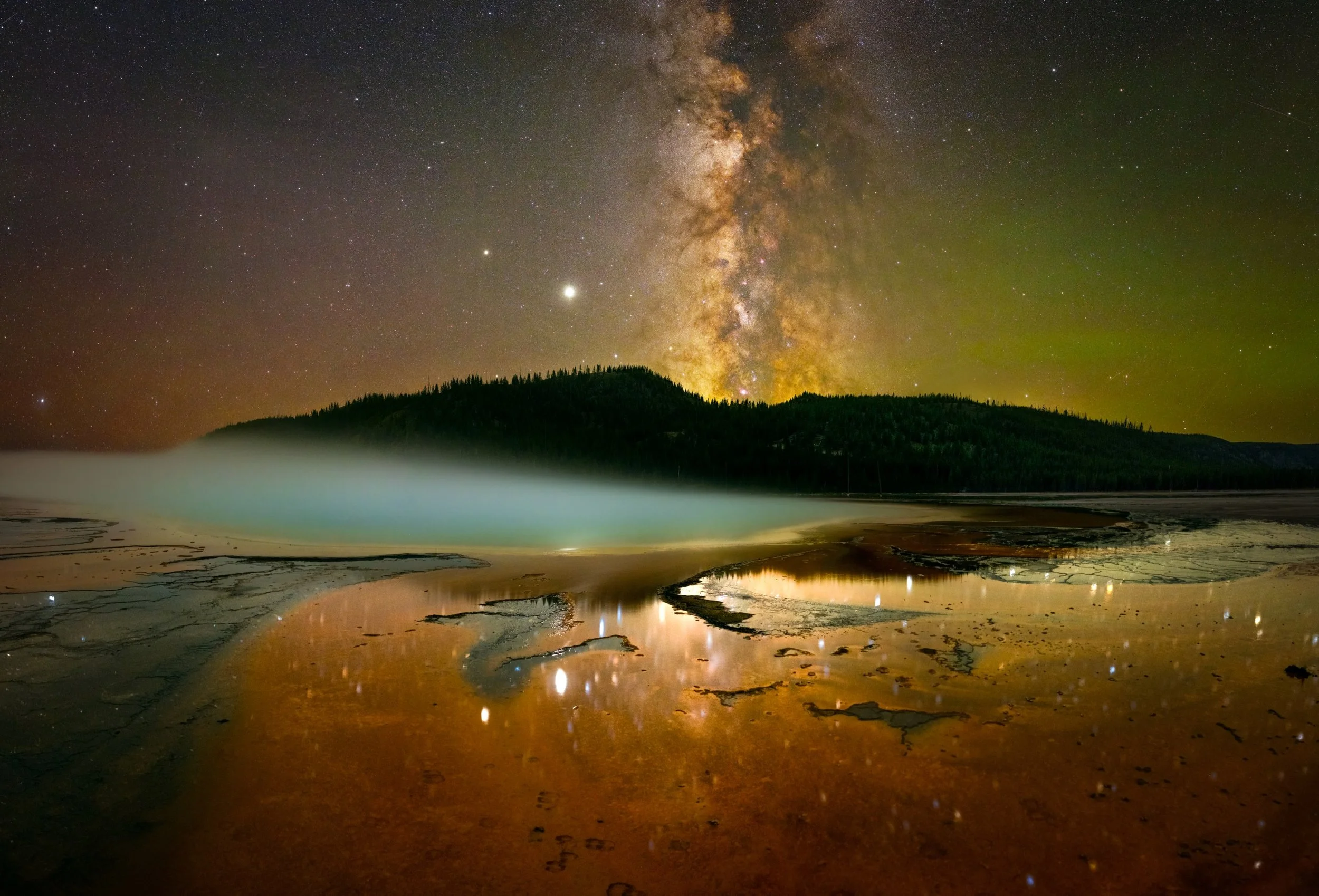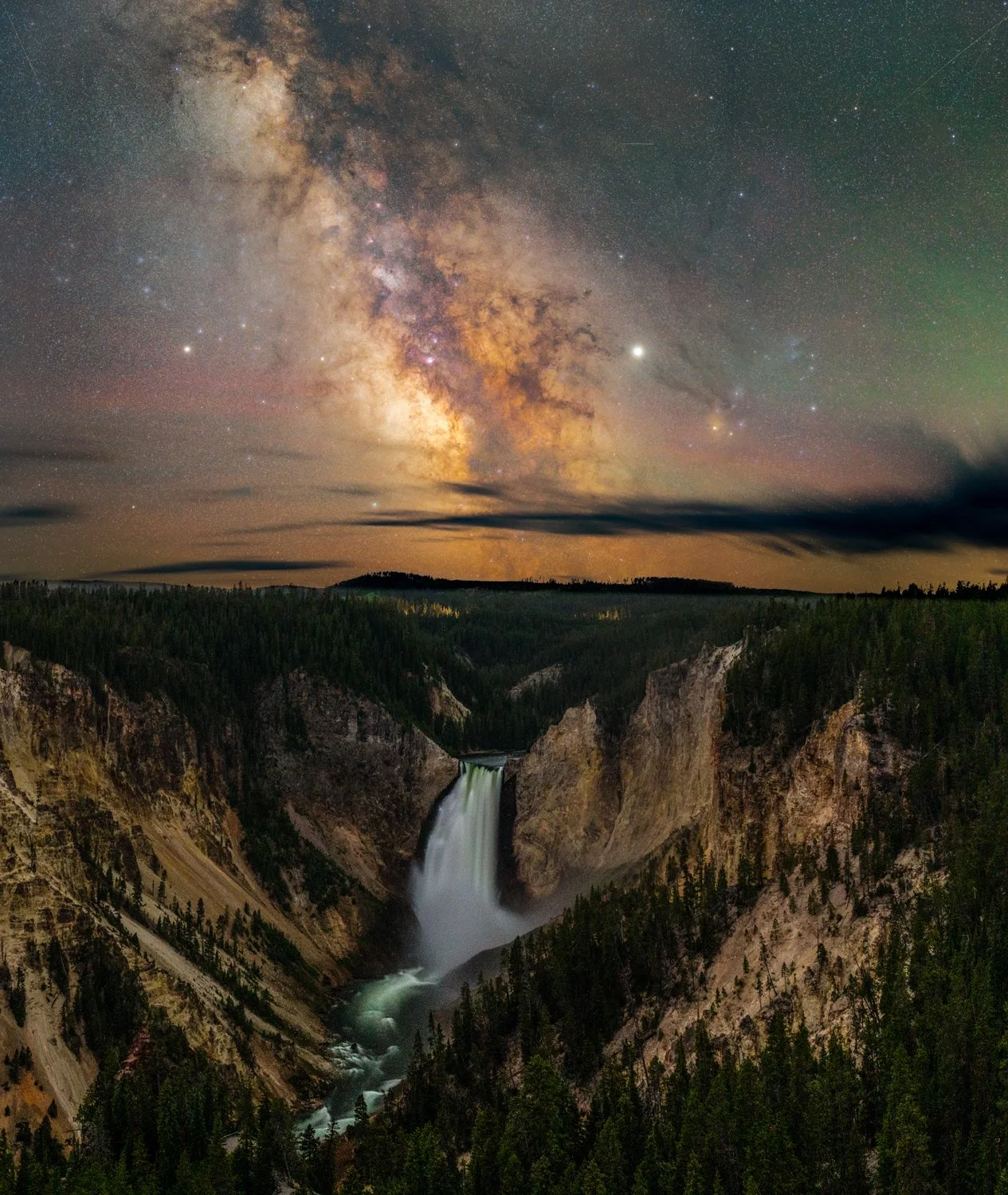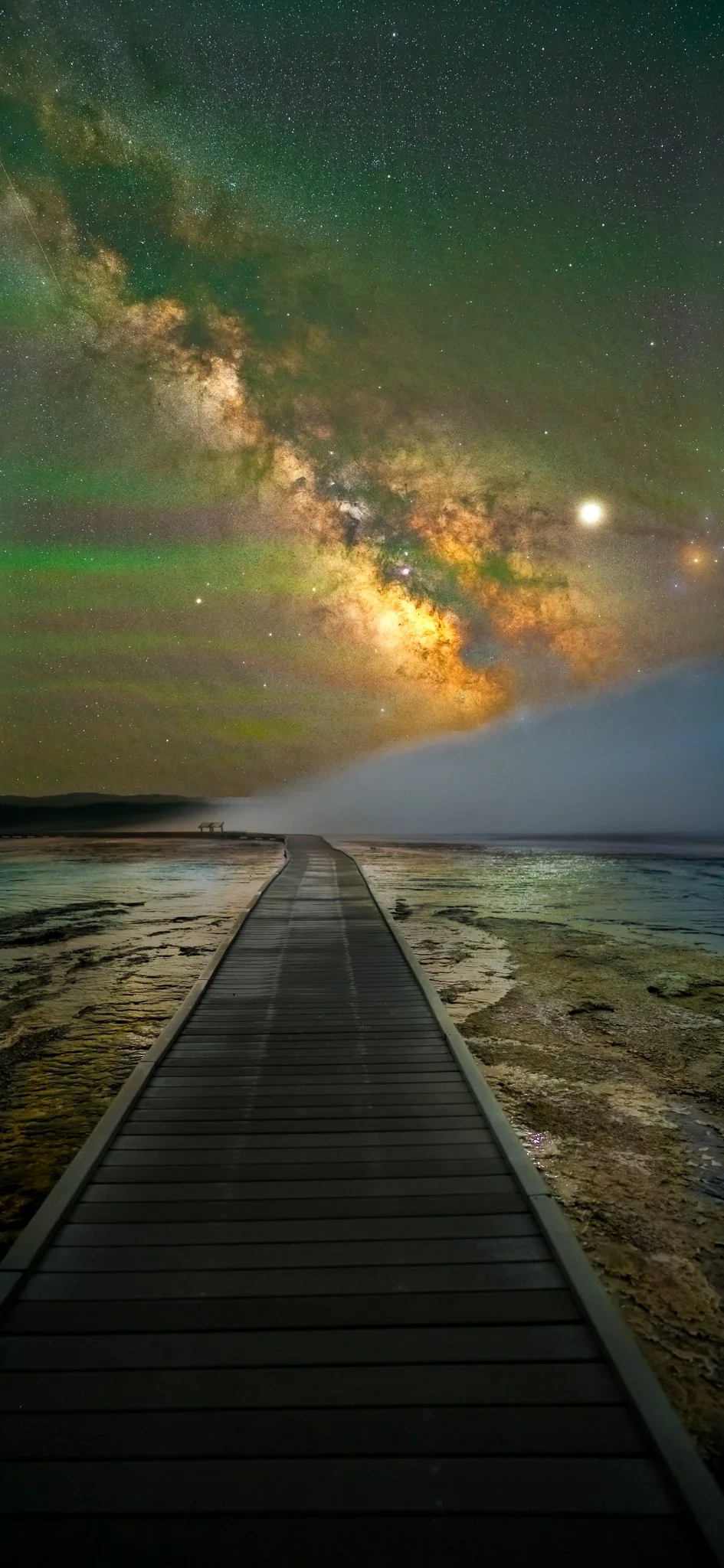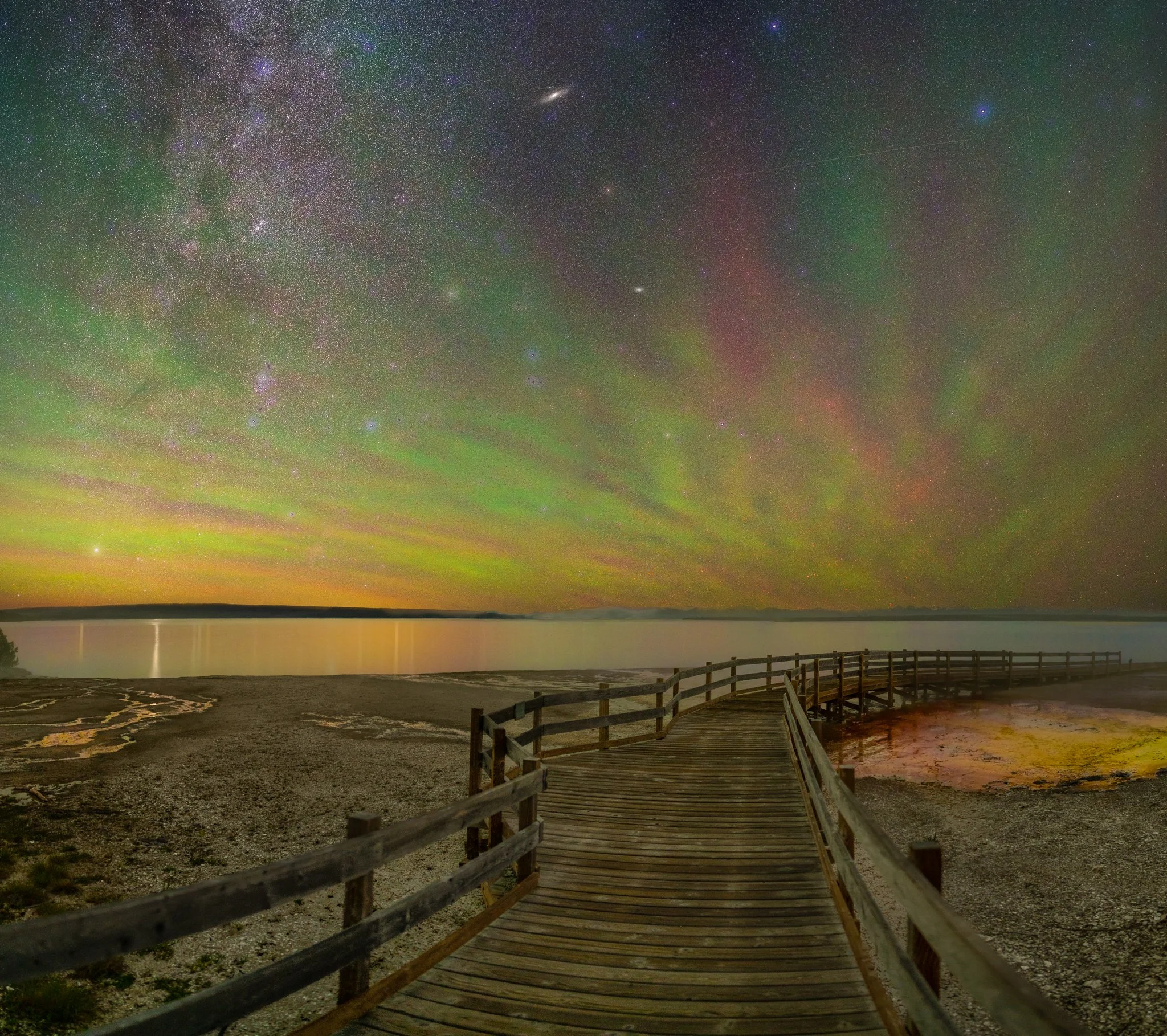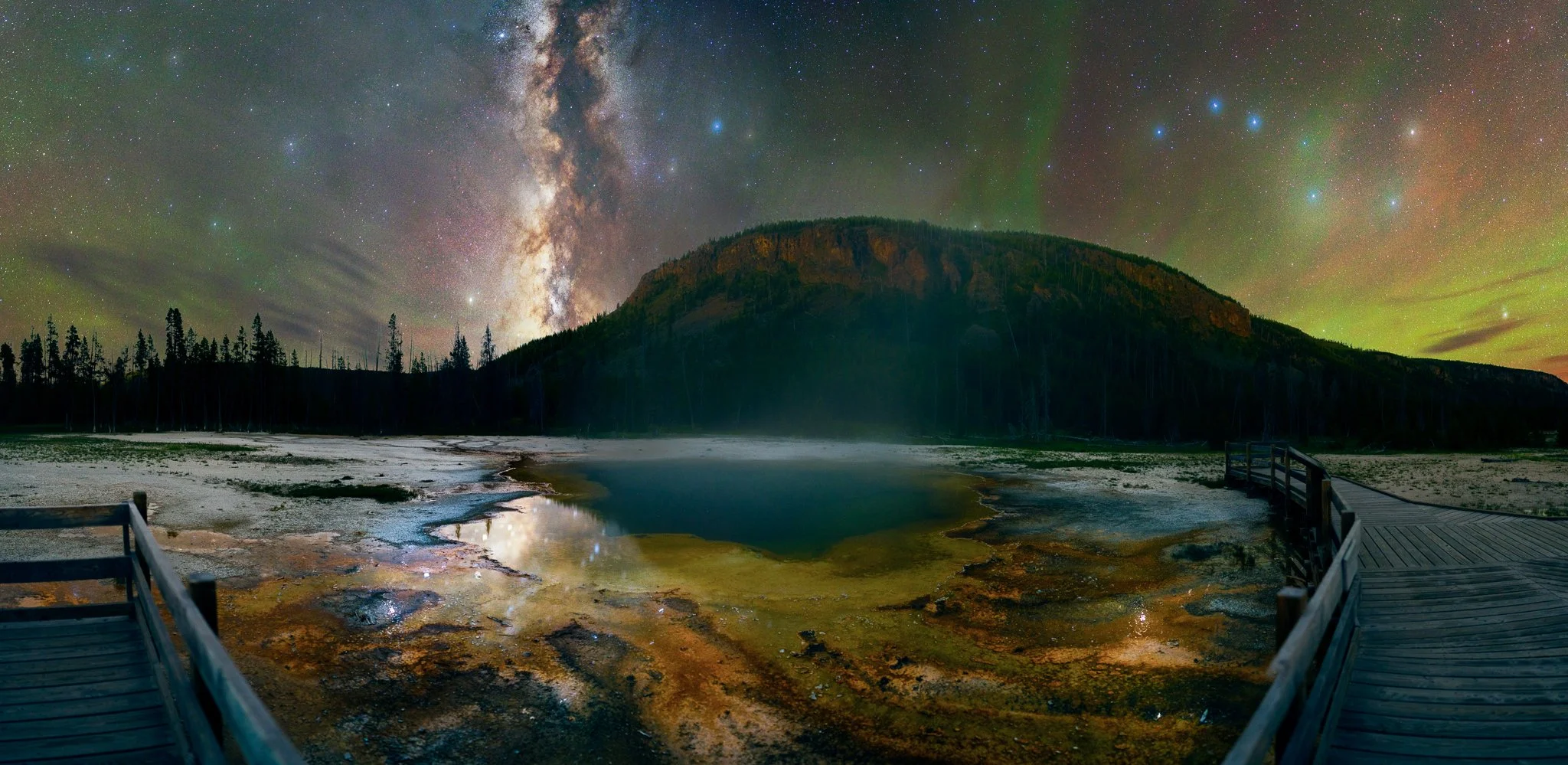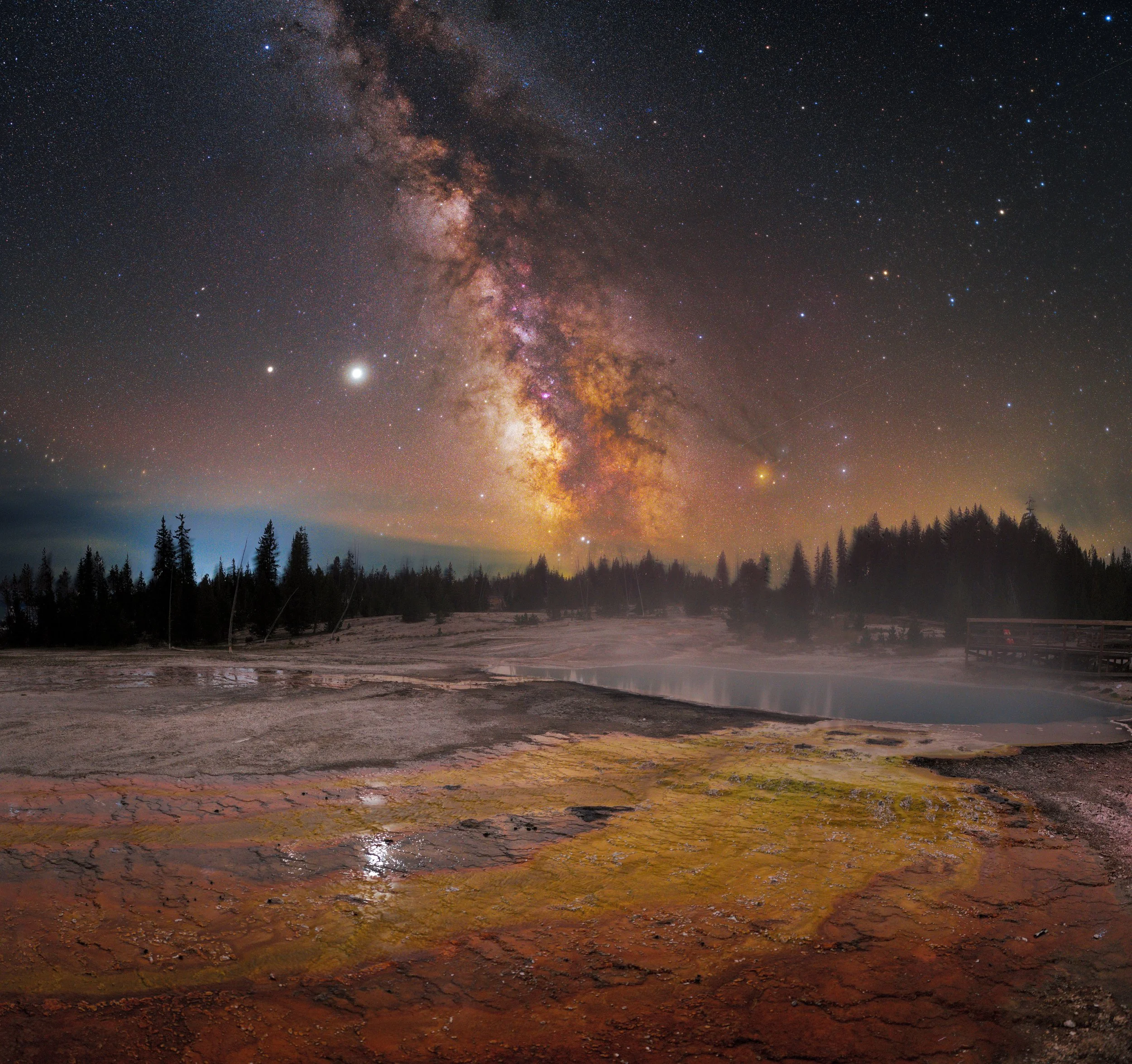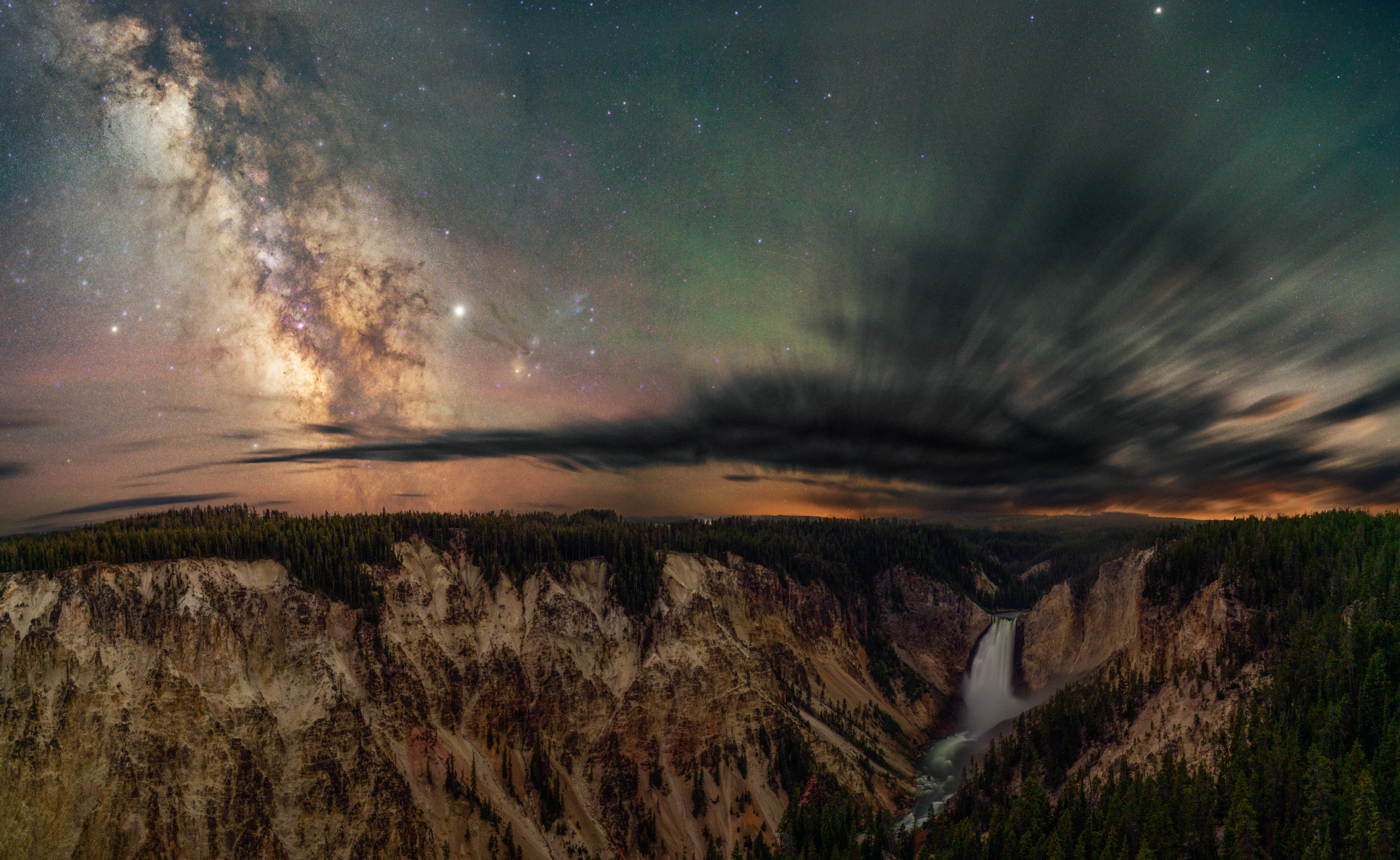
YELLOWSTONE
Yellowstone National Park, a geological marvel, sits atop a volcanic hot spot in the Rocky Mountains. Its history stretches back millions of years, marked by massive volcanic eruptions that have shaped its unique landscape. This geothermal wonderland, known for its spouting geysers and bubbling hot springs, is also a haven for astrophotography enthusiasts. The park’s remote location, far from the light pollution of major cities, ensures dark skies that offer spectacular views of the Milky Way and other celestial wonders. Its varied terrain, from the rugged peaks of the Absaroka Range to the tranquil waters of Yellowstone Lake, provides an array of stunning backdrops for night sky photography. This combination of rich geological history and pristine night skies makes Yellowstone a dual delight for both geologists and astronomers alike.
Bry - As a kid growing-up in Europe I dreamed of visiting Yellowstone, when I finally visited in my late-20’s it didn’t disappoint. I was amazed at how dynamic the park’s geothermal features are, and how dark the skies are. The first time I visited Yellowstone I took a photo over Black Pool in the West Thumb Geyser Basin. That night was new moon (no moonlight) and the stars were so bright, and the skies so dark that their reflections illuminated the colorful thermogenic bacteria living on the surface of travertine (limestone deposited around mineral springs). Black Pool is one of my favorite geysers in Yellowstone, although part of my heart belongs to Morning Glory Pool and Artemesia Spring - all are featured in photos below. Black Pool is a relatively dynamic geyser pool with its runoff and therefore colorfulness dictated by runoff through various parts of the year.
Image (right): Heart spring, Yellowstone National Park
Bry: Morning Glory Geyser
Bry: Mammoth Geyser Basin
Bry: Collapsed Pool, West Thumb Geyser Basin
Bry: Black Pool Geyser, 2015
Bry: When we camped at Yellowstone
Bry: Mud pools, West Thumb Geyser Basin
Bry: Biscuit Basin
Bry: Black Pool, West Thumb Geyser Basin
Bry: Geyser along the Firestone River
Bry: Artemisia Geyser
Bry: Grand Prismatic Geyser
Bry: Old Faithful
Bry: Yellowstone Falls
Eric: Morning Glory Pool
Bry: Grand Prismatic
Bry: Airglow over Yellowstone Lake
Bry: Emerald Pool
Eric: Black Pool Geyser, West Thumb Geyser Basin.
Bry: Yellowstone Falls
